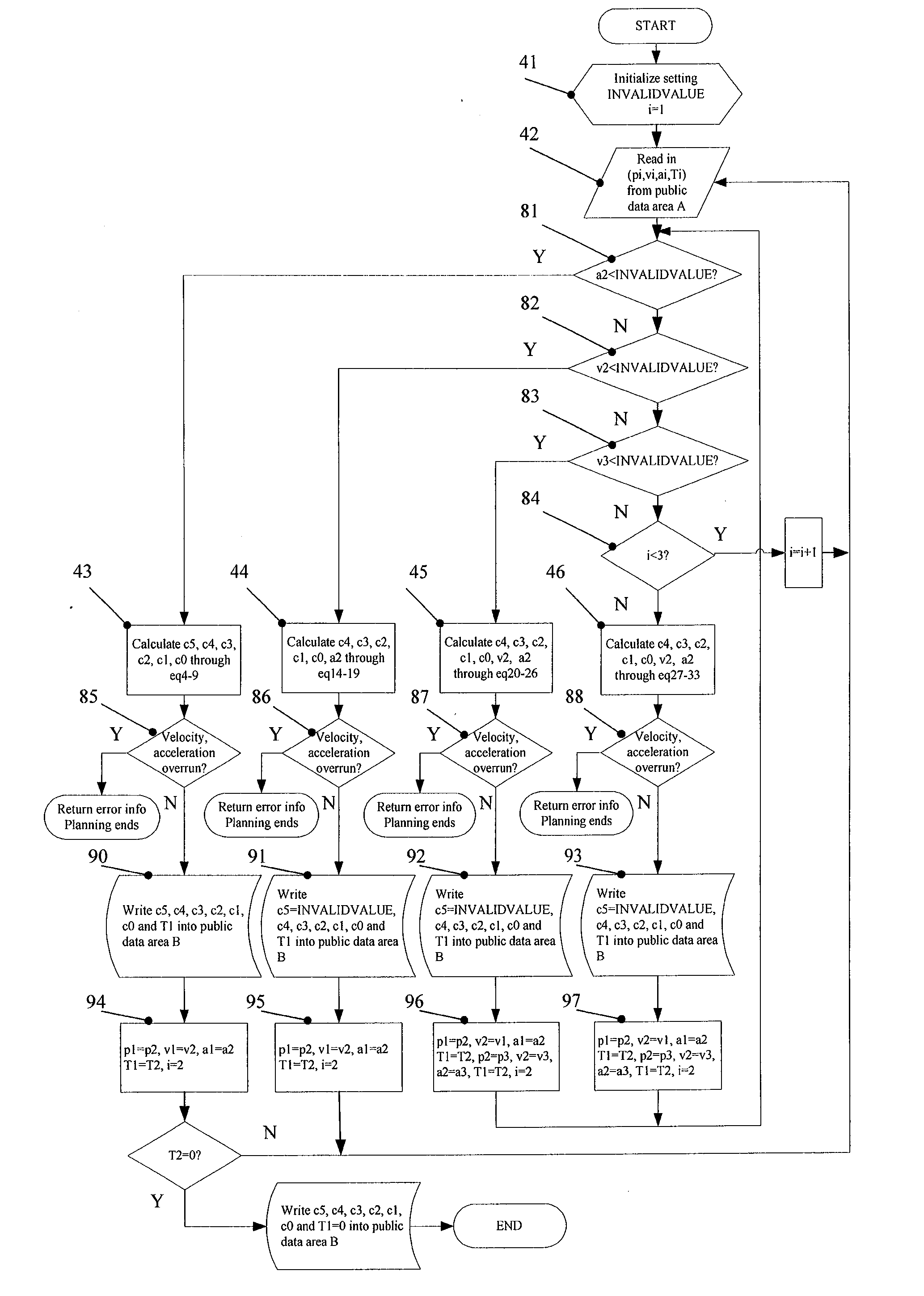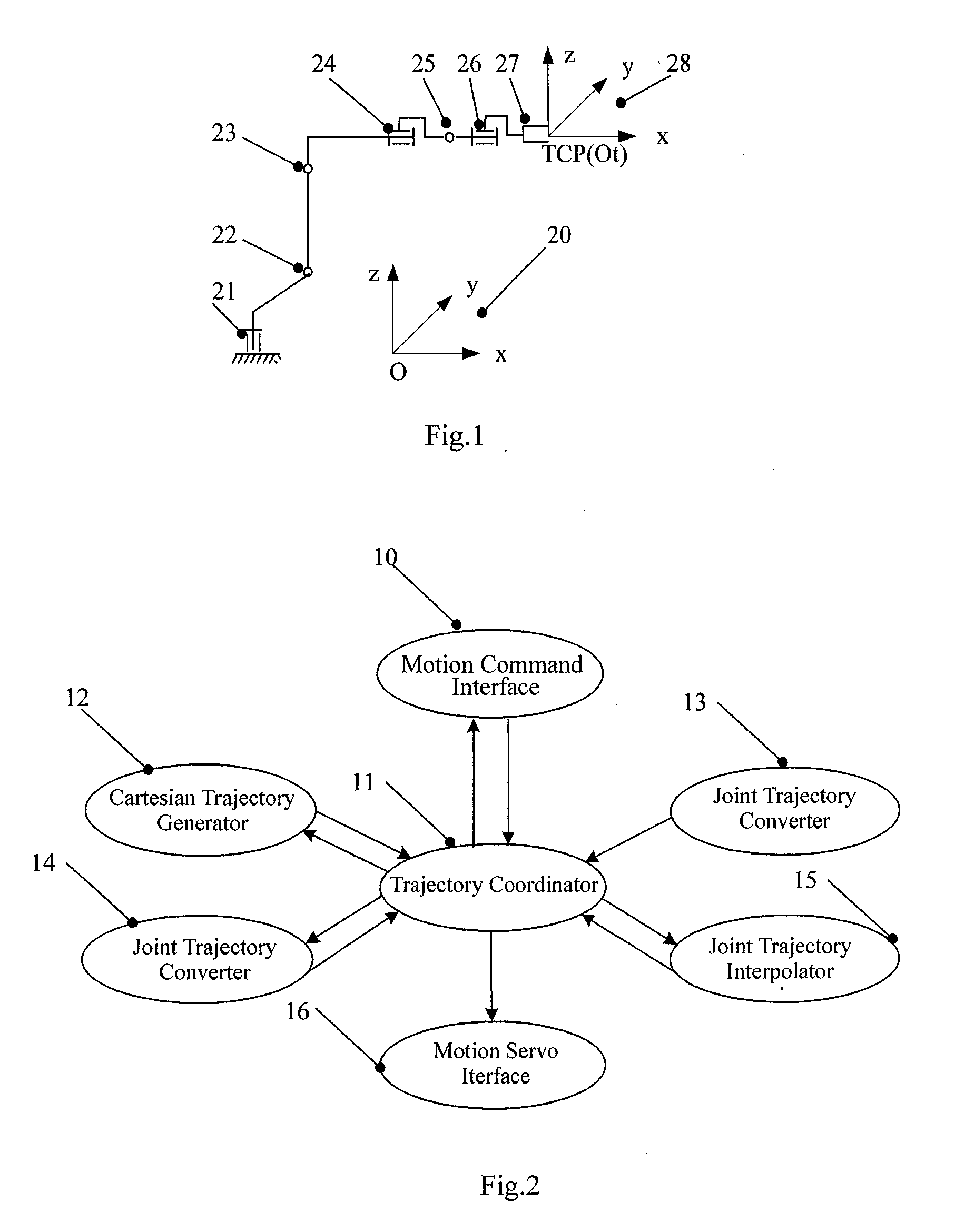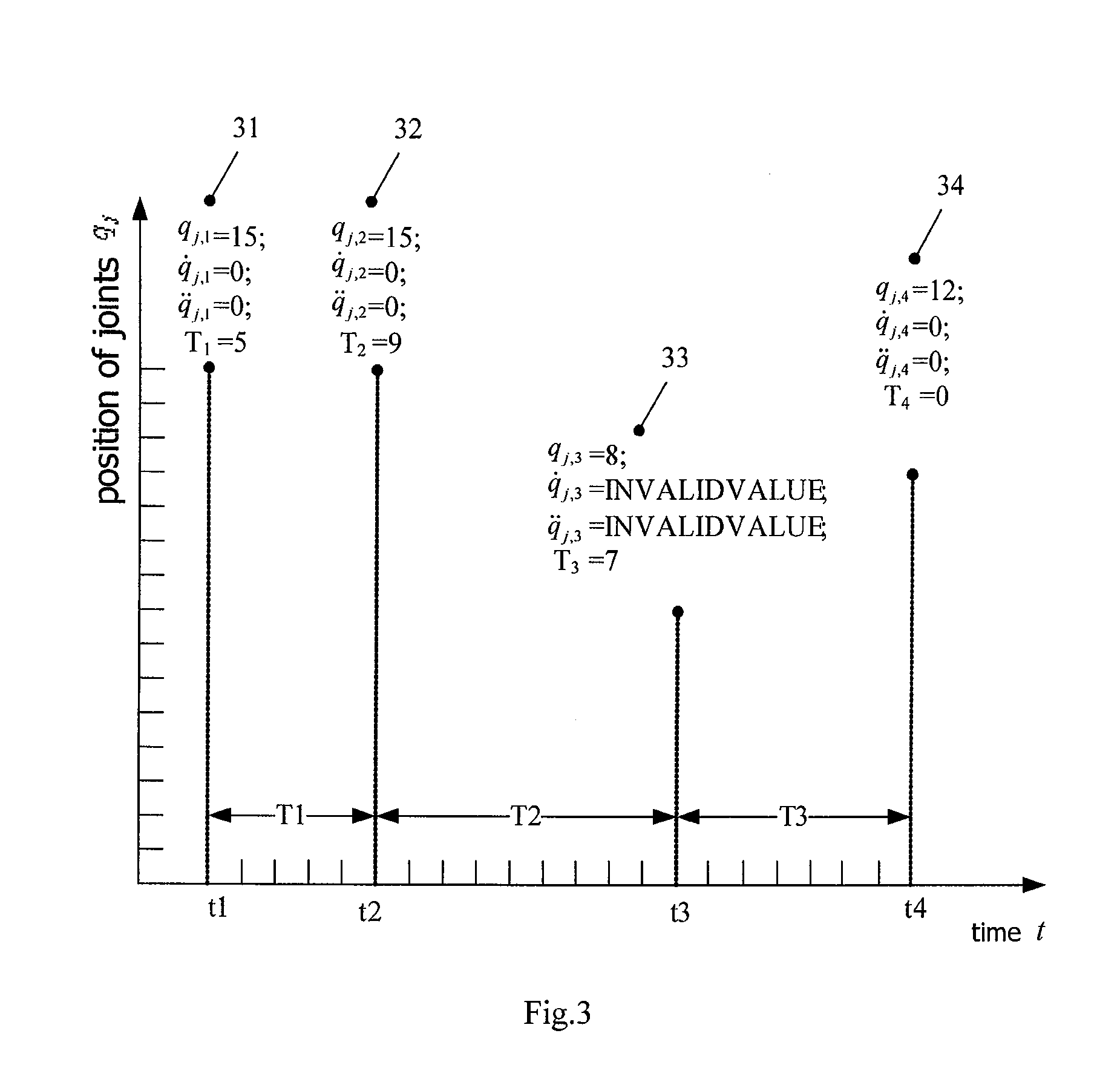System and method for robot trajectory generation with continuous accelerations
a robot trajectory and continuous acceleration technology, applied in the field of robots, can solve the problems of inability to calculate the inverse jacobian, and the joint acceleration calculation method based on the inverse jacobian matrix also failed at singular configurations
- Summary
- Abstract
- Description
- Claims
- Application Information
AI Technical Summary
Benefits of technology
Problems solved by technology
Method used
Image
Examples
case 1
acceleration of the second path point a2 is valid (Module 81), Module 43 is invoked, and a quintic polynomial is used to describe position, see eq. 1; then a quartic polynomial is used to describe velocity, see eq. 2; and a cubic polynomial is used to describe acceleration, see eq. 3. ‘u’ in each formula is a normalized time variable, whose definition is in eq. 10. Eq. 2 is the derivative of eq. 1 with respect to ‘u’, and eq. 3 is the derivative of eq. 2 with respect to ‘u’. The parameters (c5,c4,c3,c2,c1,c0) in eq. 1-3 can be calculated by eq. 4-9, respectively. Velocity and acceleration verification Module 85 is used to calculate the maximum velocity vmax and acceleration amax within [0,1] through eq. 2 and eq. 3, comparing vmax and amax with the velocity's limit value and acceleration's limit value in Robot Parameter Database 13, respectively. If vmax exceeds velocity's limit value or amax exceeds acceleration's limit value, the interpolation is finished, and error message is ret...
case 2
acceleration of the second path point a2 is invalid, while the velocity v2 is valid (Module 82), Module 44 is invoked, and a quartic polynomial is used to describe position, see eq. 11; then a cubic polynomial is used to describe velocity, see eq. 12; and a quadratic polynomial is used to describe acceleration, see eq. 13. ‘u’ in each formula is a normalized time variable, whose definition is in eq. 10. Eq. 12 is the derivative of eq. 11 with respect to ‘u’, and eq. 13 is the derivative of eq. 12 with respect to ‘u’. The parameters (c4, c3, c2, c1, c0) in eq. 11-13 can be calculated by eq. 14-18, respectively. a2 can be calculated by eq. 19 to substitute for the invalid number in (p2,v2,a2,T2). Velocity and acceleration verification Module 86 is used to calculate the maximum velocity vmax and acceleration amax within [0,1] through eq. 12 and eq. 13, comparing vmax and amax with the velocity's limit value and acceleration's limit value in Robot Parameter Database 13, respectively. If...
case 3
velocity of the second path point v2 is invalid (Module 83), then data of third path point is read in to form data set [(p1,v1,a1,T1), (p2,v2,a2,T2), (p3,v3,a3,T3)], while v3 is valid. Module 45 is invoked, and a quartic polynomial is used to describe the position of trajectory curve connecting the first path point and the second path point, such as eq. 11; then a cubic polynomial is used to describe the velocity of trajectory curve connecting the first path point and the second path point, such as eq. 12; and a quadratic polynomial is used to describe the acceleration of trajectory curve connecting the first path point and the second path point, such as eq. 13. ‘u’ in each formula is a normalized time variable, whose definition is in eq. 10. Eq. 12 is the derivative of eq. 11 with respect to ‘u’ and eq. 13 is the derivative of eq. 12 with respect to ‘u’. The parameters (c4, c3, c2, c1, c0) in eq. 11-13 can be calculated by eq. 20-24, respectively. v2 can be calculated by eq. 25 and...
PUM
 Login to View More
Login to View More Abstract
Description
Claims
Application Information
 Login to View More
Login to View More - R&D
- Intellectual Property
- Life Sciences
- Materials
- Tech Scout
- Unparalleled Data Quality
- Higher Quality Content
- 60% Fewer Hallucinations
Browse by: Latest US Patents, China's latest patents, Technical Efficacy Thesaurus, Application Domain, Technology Topic, Popular Technical Reports.
© 2025 PatSnap. All rights reserved.Legal|Privacy policy|Modern Slavery Act Transparency Statement|Sitemap|About US| Contact US: help@patsnap.com



